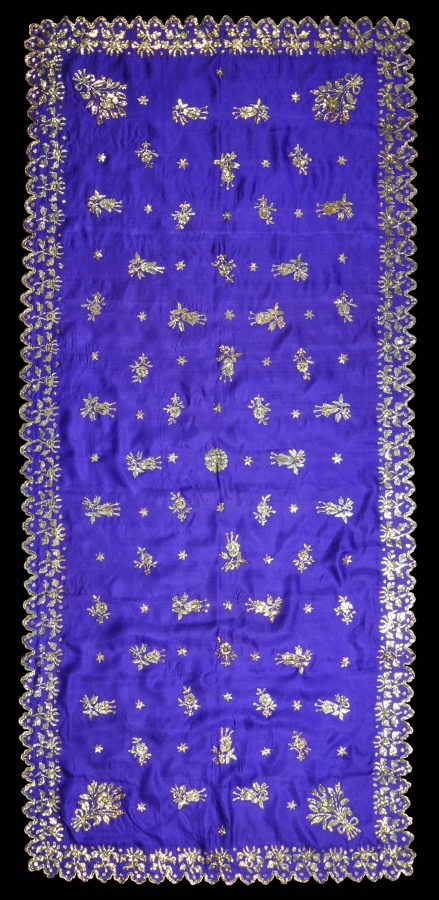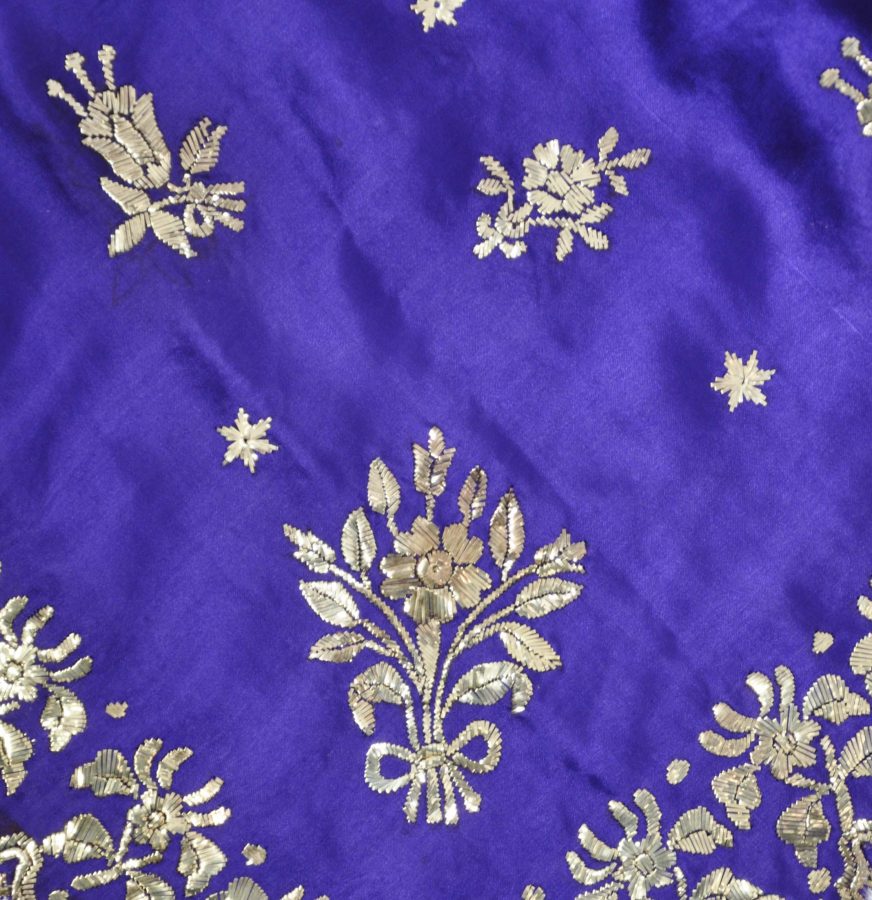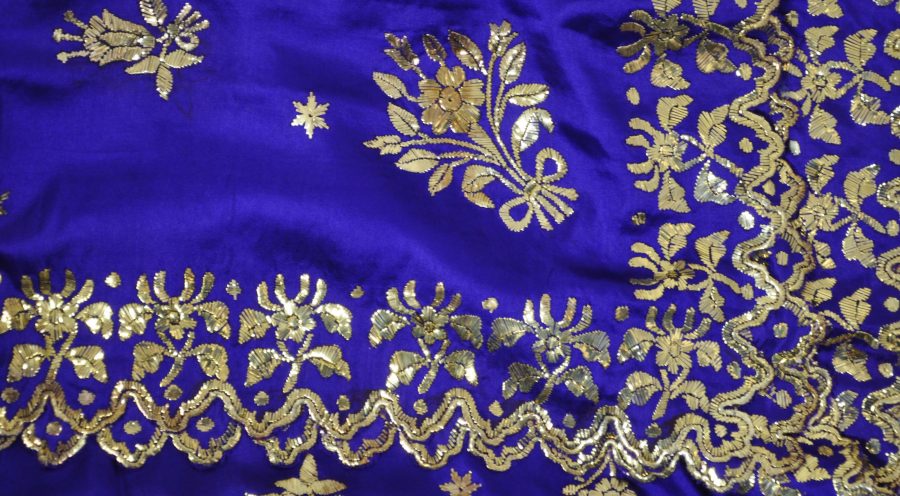Enquiry about object: 5310
Malay Kelingkan Shawl (Kain Selendang)
Malay People, Malaysia early 20th century
149cm x 66cm
Provenance
collected by Alwyn Sidney Haynes (1878-1963), and thence by descent. Haynes was a colonial administrator in Malaya and the Straits Settlements between 1901 and 1934. He held many posts including Acting British Resident, Pahang (1924); British Resident, Perak (1925); British Advisor, Kedah (1925); British Advisor, Kelantan (1930); and Acting Colonial Administrator, Straits Settlements (1933), after which he retired and returned to England, and lived near Stratford-upon-Avon, and then in Leamington Spa. Haynes loaned some of the items he collected in Malaya to the Pitt Rivers Museum in Oxford in 1939. He was awarded an Order of the British Empire (OBE) in 1950.
This museum-quality shawl (known as a kain selendang in Malay) of blue-purple satin has been heavily embroidered with flat, ribbon-like gold metallic thread in a style known as kelingkan work. Kelingkan textiles were made on the Malay Peninsula’s East Coast, and typically were worn by the female Malay royalty of Selangor, Perak, Kedah, Kelantan and Terengganu for ritual events such as weddings and coronations. Most kelingkan was used to make shawls.
The example here has scalloped edging all the way around. It is also edged with a floral gold border (birai) and the central field (badan) has been embroidered with a variety of flowers and floral stalks (sekaki bunga).
The embroidery motifs are the same on both sides of the textile. The metallic thread is sewn through the textile repeated. The technique is known as tikam tembus.
Several related examples in the Islamic Arts Museum of Malaysia are illustrated in Uda (2013).
The example here is in perfect condition. It was brought back to the UK by an English colonial administrator in the early 20th century. It was probably new when it was bought, was never used, and has been in storage ever since.
References
Uda, Y.M.R.D.P. Fuziah Raja Tun et al., Tradition & Continuity: Woven and Decorated Textiles of the Malay Peninsula, Islamic Arts Museum Malaysia, 2013.




